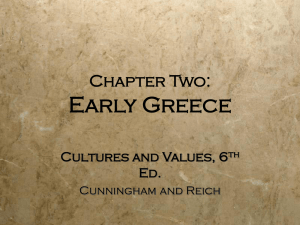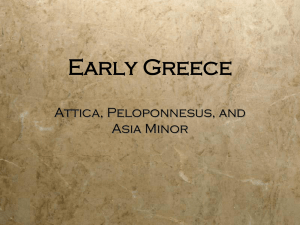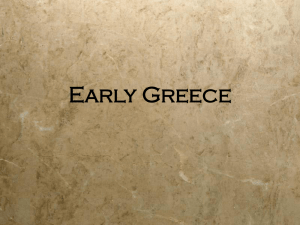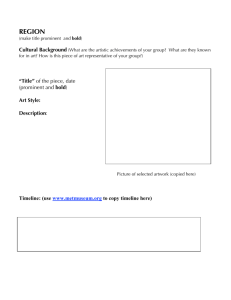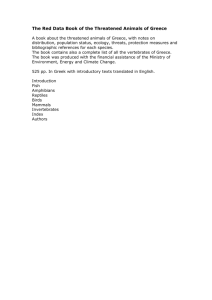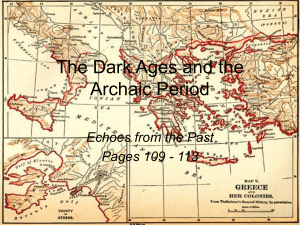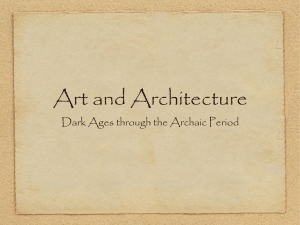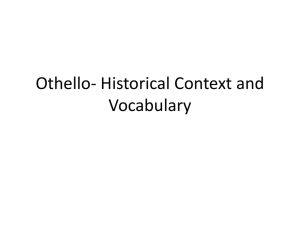Homer and the Heroic Age
advertisement
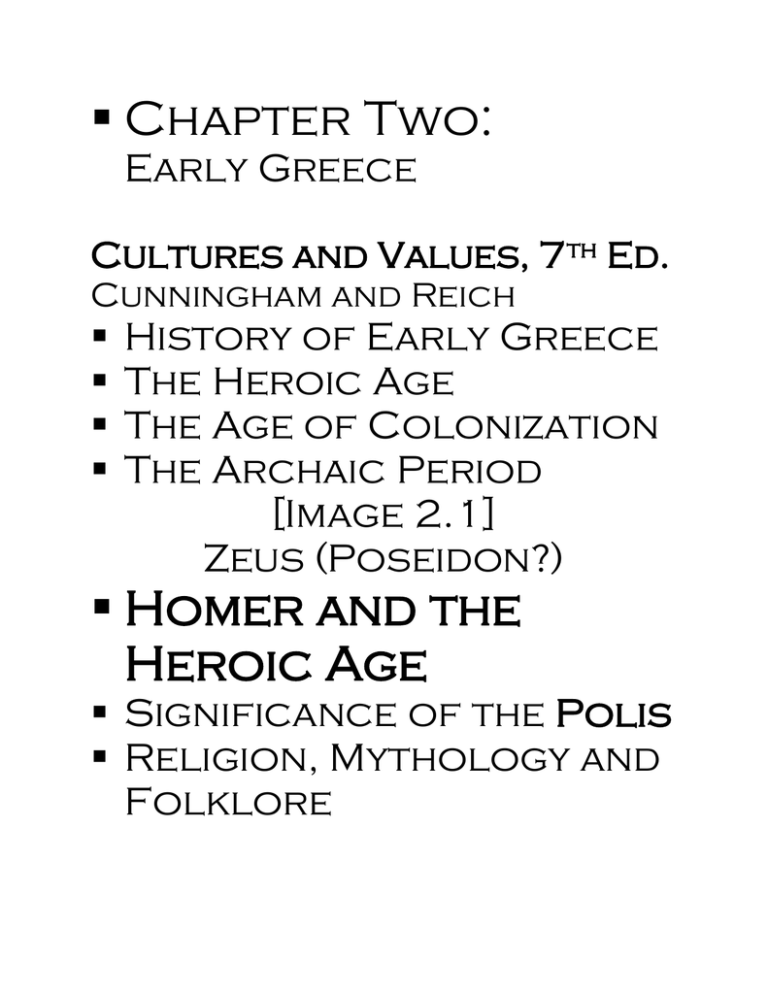
Chapter Two: Early Greece Cultures and Values, 7th Ed. Cunningham and Reich History of Early Greece The Heroic Age The Age of Colonization The Archaic Period [Image 2.1] Zeus (Poseidon?) Homer and the Heroic Age Significance of the Polis Religion, Mythology and Folklore Art & Literature vs. Prayer The Iliad & The Odyssey “the Homeric question” Oral Tradition Epithets, Elaborate Similes Iliad Theme of Human Responsibility Odyssey Return of the Epic Hero Art and Society Painted Vases Protogeometric (1000900 B.C.E.) Concentric circles, semicircles Geometric (900-700 B.C.E.) Linear designs, the meander Human Forms (~800 B.C.E.) Amphoras Age of Colonization Prosperity of CityStates Competition, Image Wealth + OverPopulation = Colonization Italy, Sicily, Egypt, Asia Minor Trade and Cultural Exposure Orientalizing Visual Arts at Corinth and Athens Corinthian Art Eastern Motifs Commercially Successful Athenian Art Narrative style (Myth, Daily Life) Trade Rivalry: Corinth vs. Athens The Beginnings of Greek Sculpture Near Eastern and Egyptian influences Kore, Kouros Increasing Realism, Naturalism Careful study of human anatomy Representation of Life and vigor Sculpture and Painting in the Archaic Period Solon’s Legal Reformations Tyrants / Artistic Patronage Artistic Developments Freestanding Figures High & Low Relief Carvings The “Archaic Smile” Vase Painting Black- and Red-Figure Styles [Image 2.9] Calf-Bearer [Image 2.10] Peplos Kore [Image 2.13] Kritios Boy [Image 2.15] Euphronios, painter, Euxitheos, potter, redfigure calyx krater Architecture: The Doric Order Simple dignity No Base/20 flutes Capital Echinus, Abacus Entablature Architrave, frieze, triglyphs/metopes Cornice, Pediment [Image 2.16] Basilica at Paestum Architecture: The Ionic Order Ornate, fanciful Tiered Base/24 flutes Capital Volutes 3-D Architraves Running Frieze Music and Dance in Early Greece Doctrine of Ethos (Musical Theory) Dorian, Phrygian modes Music=Primarily vocal Paean, dithyramb Instrumentation Cithera, aulos Significance of Narratives Music and Dance Literature and Philosophy Hesiod Theogony, Works and Days Lyric verse vs. Heroic verse Sappho Presocratics Materialists, Pythagoreanism, Dualists, Atomists Herodotus (Father of History) Right over Might Chapter 2: Discussion Questions What significant differences exist between the cultures of the iron age and those of the bronze age? Explain. Consider the role of religion in Early Greece. What does Early Greek theology suggest about the concerns of the society? Explain. What were the causes for and the results of Greek colonization? Cite specific examples. Explain the new directions of art in the Archaic Period. What do these changes suggest about the culture that was producing and patronizing this art?
